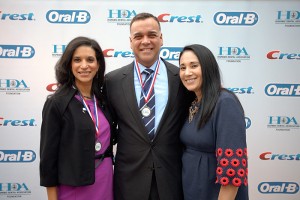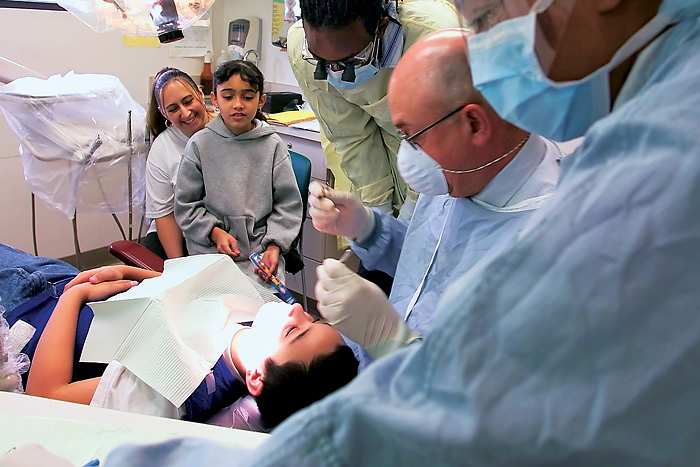
A new oral health survey of U.S. Hispanics shows that patients in this growing population group want more information on good oral health habits, access to affordable care and dental insurance, and more dental health care professionals who are Hispanic or who speak Spanish.
Dr. Sarita Arteaga, associate clinical professor at the UConn School of Dental Medicine, and Dr. Iván Lugo, a UConn dental school alumnus, released the survey results during the Hispanic Dental Association’s annual meeting in November.
“This is just the beginning of an initiative to address the gaps in the oral health knowledge and access to care for U.S. Hispanics,” says Arteaga.
Survey results come at a time when U.S. Census Bureau reports show that between 2000 and 2010, the Hispanic population grew by 43 percent, and more than half of the growth in the total population of the United States between 2000 and 2010 was due to the increase in the Hispanic population.
The survey report, “Hispanics Open Up About Oral Health Care,” is posted online at www.dentalcare.com and on the HDA website.
Among the findings:
- Almost one-third of Hispanics (30 percent) responded that they thought cavities will go away on their own through regular tooth brushing. About half or more of respondents also had misperceptions about the importance of brushing versus flossing, whether bleeding is normal during brushing and if mouthwash provides oral health benefits beyond just freshening breath.
- Nearly half (45 percent) of Hispanics lack dental insurance and nearly one in five (18 percent) have not visited the dentist at all in the past two years, compared to 12 percent of the general population.
- About six in 10 Hispanics feel that having Spanish-speaking and Hispanic dentists/hygienists in their community would help them “a lot” in achieving and maintaining better oral health.
- Sixty-five percent of Hispanics said they experienced at least one oral health issue in the past year versus 53 percent of the general population. For more than one-third of Hispanics (36 percent), oral health problems experienced in the past year were severe enough to impact their daily activities, compared to 22 percent of the general population.
- Among Hispanic parents, many of these same knowledge gaps exist, as does the desire for more oral health information. Yet, eight in 10 Hispanic parents (82 percent) consider themselves an excellent or a good source for teaching their children about oral health habits.
Arteaga and Lugo say that a lot of the results backed up perceptions that dental professionals and other stakeholders have long suspected, but some data were surprising.
“I had an ‘aha’ moment when we began to look at the statistic that 30 percent of respondents thought they could brush away cavities,” says Lugo, professional and scientific relations and regional manager for North America and Puerto Rico at Procter & Gamble. “These myths give us a picture of how much Hispanics need more oral health prevention knowledge. They not only lack good information, they also tend to pass on erroneous information to their children, friends and neighbors.”
“The overwhelming majority of survey respondents want a Spanish-speaking or Hispanic dental health provider. They want to be able to relate to them without a language barrier, but more importantly, without cultural barriers,” says Arteaga, an HDA Foundation committee member and past president. “They also have two other serious barriers to good oral health that are equally troubling—lack of oral health literacy and access to affordable care and insurance.”
“One of the first steps will be educating dental office teams about the needs of Hispanic patients,” says Lugo. “Dental professionals need to be aware of barriers – not just language barriers, but cultural and access barriers – and reach out outside the dental office to friends, family members and neighbors with oral health information that can help patients with limited oral health literacy.”
——-ADA News Release
Follow the UConn Health Center on Facebook, Twitter and YouTube.



